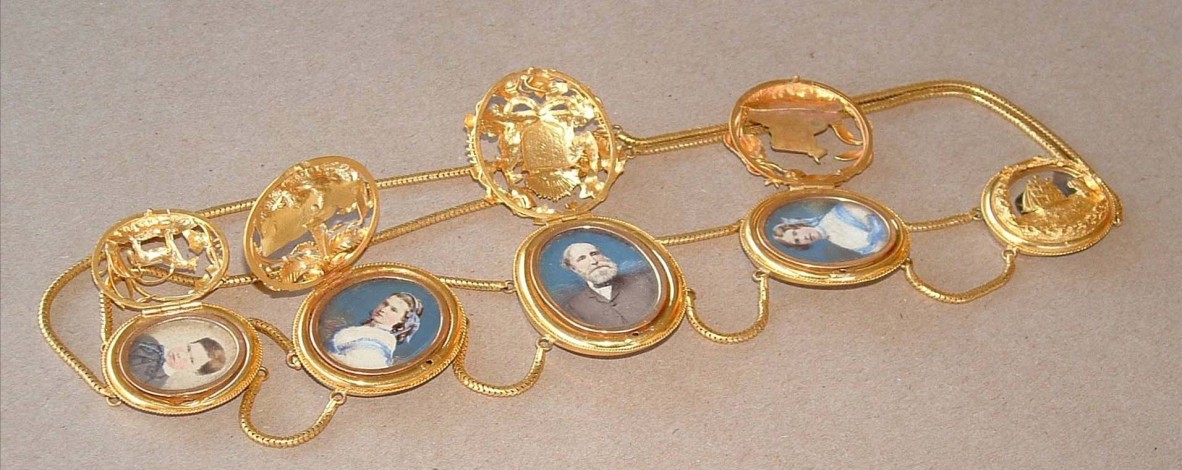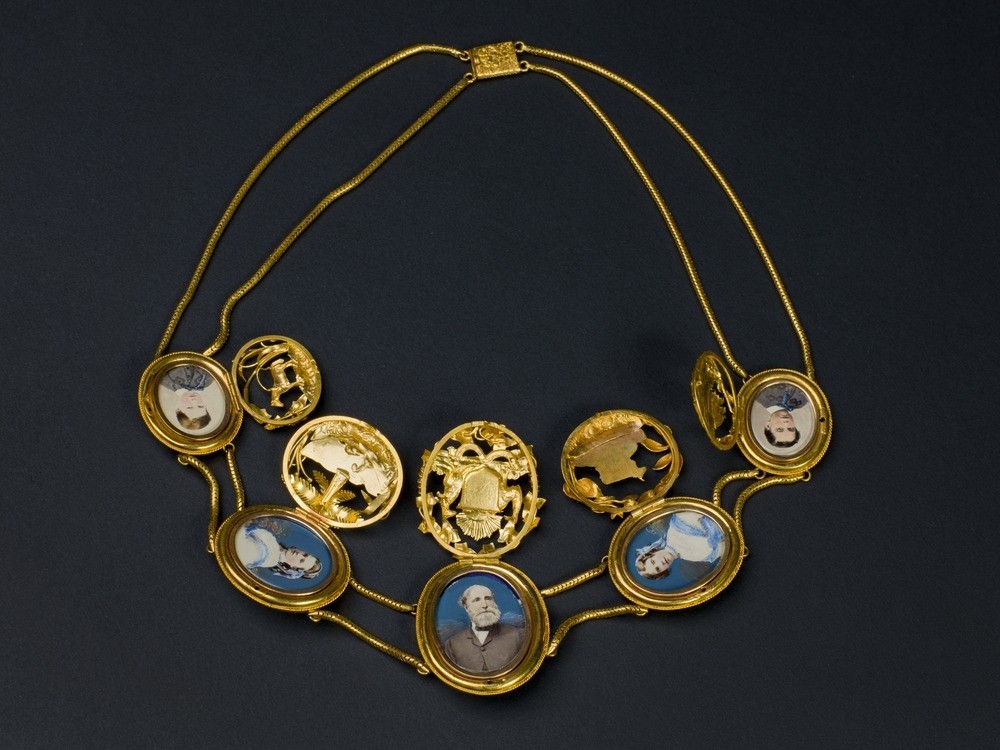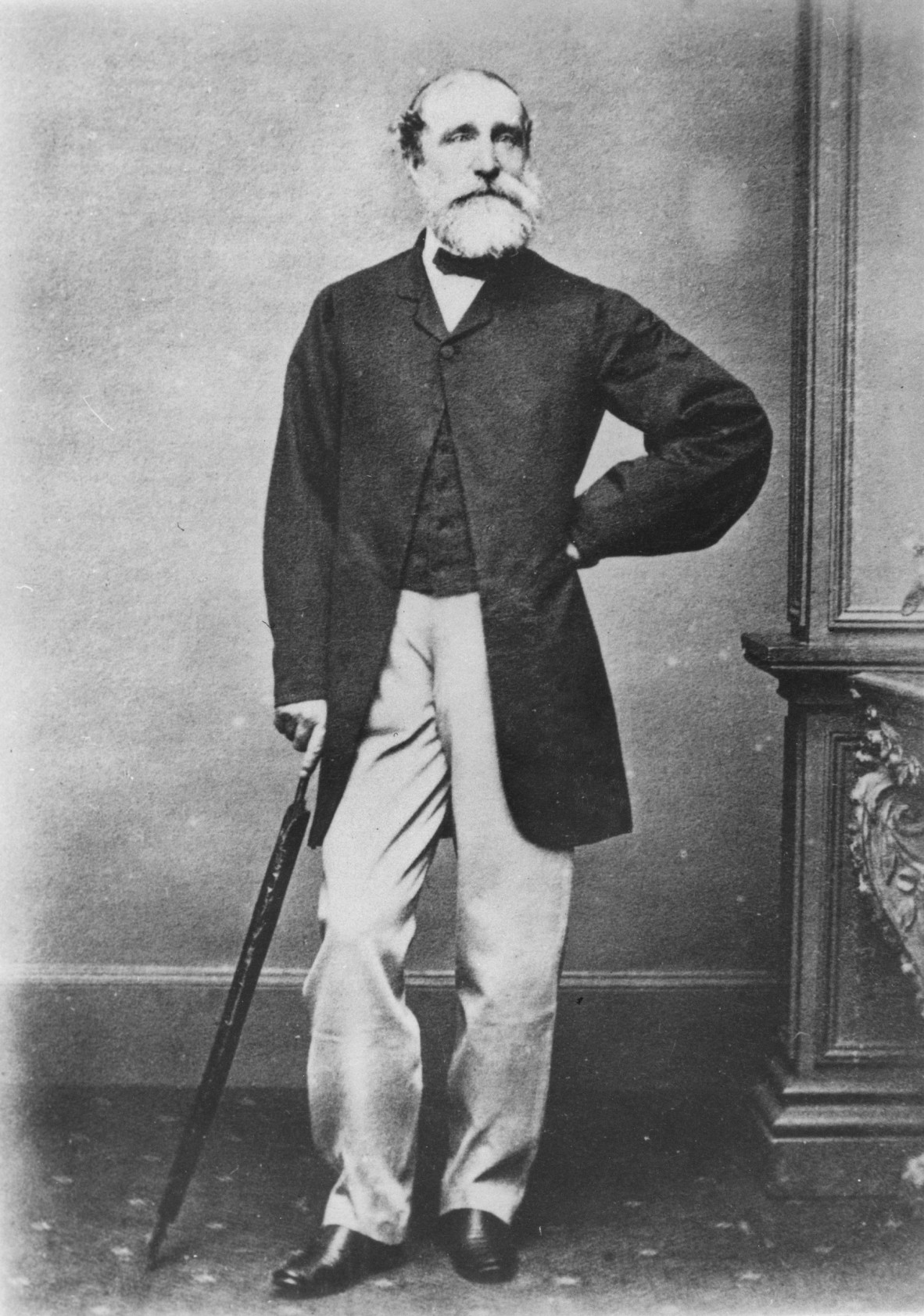John Watts Necklace ca. 1866 - 1869: treasure collection of the John Oxley Library
By Queensland Memory, State Library of Queensland. | 24 February 2021
Stored among the Rare and Restricted collections of the John Oxley Library, the John Watts 18-carat gold swag necklace is a fine example of silversmithing and craftsmanship. Danish creator Christian Ludwig Qwist (1818-1877) arrived in Australia circa 1852. He trained as a silversmith and with a professional interest in photography, commenced his Australian career on the goldfields of Victoria, opening a silversmithing workshop in Bendigo circa 1856. He became one of Australia's finest goldsmiths. Moving to Sydney in the 1860's he first worked with the firm Hogarth, Erichsen & Co, and in 1864 set up his own workshop in Hunter Street, Sydney. Qwist exhibited his workmanship at the Paris Universal Exhibition of 1867.

Necklace commissioned by pioneer and politician John Watts, creator Danish goldsmith Christian Qwist. Acc 6681. John Oxley Library, State Library of Queensland. Image number 6681-0001-0002,

18 carat gold swag necklace with five openwork carved gold hinged pendants. Acc 6681. John Oxley Library, State Library of Queensland. Image number 6681-0001-0002
View more detailed images of the necklace in online access on the One Search catalogue record .
John Watts was born on the 27th February 1821 and was an early pioneer of Queensland. After leaving England for Australia in 1840 on the Guiana, he worked on a dairy farm in South Australia, arriving in Brisbane on the Fama in 1846. In 1859, John Watts became manager of a property near Rosewood, during which time he contested the seat of Drayton, near Toowoomba. He won the seat with a large majority and sat in the first parliament of Queensland in 1860. He continued to run sheep during his political career.
Four years later in 1864 Watts was appointed to the Upper House, but he resigned soon after making the decision to contest the seat in the area in which he lived on the Western Darling Downs. After winning the seat, Watts was elected into the Legislative Assembly in 1865. He played a major role in the building of the Helidon to Toowoomba railway line as well as the construction of the Toowoomba railway station. After retiring from parliament Watts returned to England with his wife and children making his final visit to Queensland in 1892.

Early Queensland pioneer John Watts, Minister of Works, Queensland Parliament. John Oxley Library, State Library of Queensland. Negative number: 199158
In a typescript dated 1901, John Watts gives an account of farming and pastoral life, and the difficulties experienced by the early pioneers of South-East Queensland. His reminiscences referred to the relations between the settlers and indigenous people, murders of white settlers by indigenous tribes and the reprisal attacks on indigenous people by settlers, and droving around Ipswich and the Condamine Station. He wrote about the creation of the colony of Queensland in 1859, the site of the new parliament house in the Brisbane City Botanical Gardens and his retirement.
Anne Scheu, Engagement Officer, Collection Engagement, State Library of Queensland
Collection:
Read about other treasure collections from the John Oxley Library
- Margaret Lawrie Collection of Torres Strait Islands
- Johnstone Gallery Archive
- Archibald Meston Papers
- Mary Watson diaries
- Central Queensland Separation League Petition
- (I’m) Stranded : No Time, The Saints
- Real estate maps collection
- Portrait of an Australian Artists' Book
- Stable collection 1917 - 1991
- Tony Fitzgerald Collection 1984 - 2009
- Tindale Genealogical Collection 1928-1960
- Charles Seymour Papers 1880-1924
- Dr Barbara Piscitelli AM Children’s Art Archive 1990-2020
- Bennett Family Films 1956 – 1988
- The Ron and Ngaire Gale Photographic Collection
- Storylines Q150 digital stories
Comments
Your email address will not be published.
We welcome relevant, respectful comments.